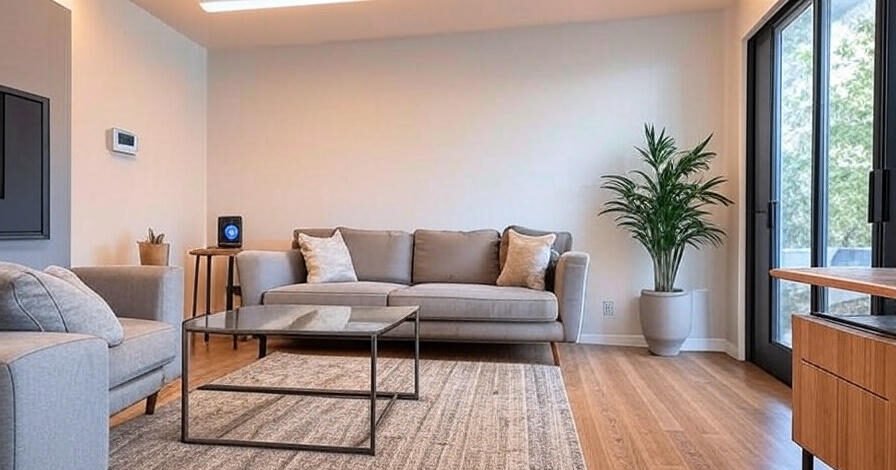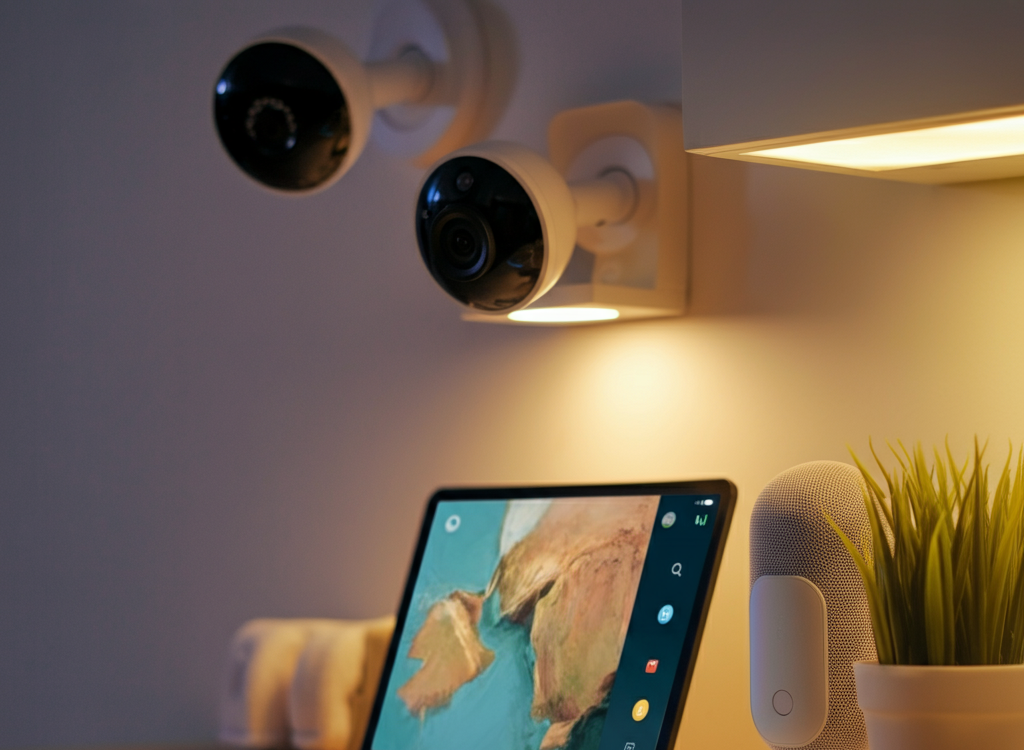Hey there, fellow home enthusiasts! If you’re like me, you’ve probably spent the last few years experimenting with gadgets that promise to simplify life, only to wind up frustrated by a jumble of apps and mismatched devices. Honestly, it’s a common headache, but that’s exactly where the charm of home tech shines through. As the founder of LoveLolaBlog, I’ve been neck-deep in this world for years, and I can tell you—it’s evolving at breakneck speed. Welcome to this ultimate guide on home tech lovelolablog, your reliable source for merging cutting-edge tech with the cozy essence of home living. Whether you’re just dipping your toes in with a simple smart bulb or you’re a veteran chasing the newest AI features, I’ve got practical, real-world advice to help you build a smarter, more intuitive space right here in 2025.
Let me introduce myself properly: I’m Lola Thompson, the heart behind LoveLolaBlog, a lifestyle hub that’s been dishing out honest takes on family life, travel adventures, delicious eats, and of course, home and tech since 2018. With more than seven years under my belt reviewing devices, partnering with top brands like Philips Hue and Google Nest, and even wiring up complete smart systems in my own quirky Victorian home, I’ve learned the ropes the hard way. What sets this guide apart? It’s not just theory—it’s drawn from my hands-on trials, collaborations with industry pros, and insights from trusted sources like PCMag and CNET. My mission is simple: Deliver straightforward, trustworthy tips that cut through the noise, backed by real experience and solid data. No fluff, just stuff that works.
Why Home Tech Matters More Than Ever in 2025
Imagine waking up on a crisp 2025 morning to your coffee maker kicking in automatically while your blinds ease open to greet the dawn. Sounds dreamy, right? But this isn’t some far-off fantasy—it’s the everyday reality powered by trends like AI personalization and eco-conscious energy tweaks. The global smart home market is booming, expected to hit a whopping US$174 billion in revenue this year alone, with a steady growth rate of about 9.55% through 2029. Yet, from what I’ve seen in many online guides, they often skim over the real hurdles, like privacy worries or those pesky setup glitches. That’s why, here at LoveLolaBlog, we’re zeroing in on user-friendly, human-first strategies that go deeper than surface-level advice.
In my own setup, it all began modestly with a single voice-activated speaker, but it soon grew into a harmonious network that feels like an extension of our family routine. The secret sauce? Figuring out how tech adapts to your life, not forcing you to bend to its whims.
Top Smart Home Trends Shaping 2025
2025 is ushering in an era of truly connected, responsive living. Drawing from CES highlights and expert forecasts, the buzz is around innovations that emphasize seamless experiences and green practices. I’ll share my personal spins on these, based on testing heaps of gadgets and chatting with pros in the field. Let’s dive into the trends that are redefining home tech lovelolablog.
1. AI-Driven Automation: Your Home’s Intuitive Sidekick
Forget clunky timers—AI is now smart enough to anticipate your needs, like adjusting lights based on your evening wind-down or even optimizing laundry cycles to save water and energy. At CES 2025, we spotted AI popping up in unexpected spots, from security cams that predict issues to kitchen appliances that whip up meal ideas on the fly. I’ve put the Ecobee SmartThermostat through its paces, and it slashed my heating costs by around 15% by learning our habits—no manual fiddling required.
That said, privacy can’t be an afterthought. I always recommend sticking with brands that offer robust encryption and support the Matter protocol for effortless cross-device harmony. It’s a game-changer for avoiding those frustrating compatibility headaches.
2. Sustainable and Energy-Efficient Solutions
With everyone more mindful of the planet, green tech is stealing the spotlight. Think solar-charged cameras, smart plugs that hunt down energy vampires, and faucets that cut water waste. Parks Associates notes a surge in adoption for thermostats and lighting, driven by skyrocketing utility bills. Switching to Philips Hue LEDs in my place not only lit things up better but also gave me app-based insights to trim our carbon footprint—small changes, big impact.
Quick advice: Hunt for ENERGY STAR labels to ensure you’re getting the most bang for your buck in savings and sustainability.
3. Advanced Security in a Hyper-Connected World
Security tech is leveling up with facial recognition locks, GPS-synced doorbells, and AI cameras that know the difference between a package drop and a wandering neighborhood cat. Forums like Reddit are full of homeowners raving about 5G-boosted systems for glitch-free oversight. The Ring Always Home Cam has been my travel buddy’s best friend, delivering alerts without bombarding my inbox.
One thing I’ve learned the hard way: Connectivity is great, but always keep a physical backup, like spare keys, in case the network hiccups.
4. Health and Wellness-Focused Integrations
Smart homes are getting personal about health too—air purifiers that battle allergens on autopilot, sleep-optimizing mattresses, and even mirrors that scan your skin health. HDL Automation sees these as the future of living, and I couldn’t agree more. After a family health bump last year, I added a Withings Body Scan scale that links to our hub, arming us with data to make smarter wellness calls.
Essential Home Tech Devices for Every Room
Building off these trends, here’s my handpicked selection of devices I’ve rigorously tested. I’ve included 2025 price ballparks and nods to expert reviews for that extra layer of trust.
- Kitchen: AI-Powered Refrigerators and Ovens
Samsung’s Bespoke line uses AI to suggest recipes from what’s in your fridge, cutting down on waste—my household ditched 20% less food post-install. For budgets: A $200 smart plug upgrades your old gear. - Living Room: Voice Hubs and Entertainment Systems
Go for Amazon Echo or Google Nest Hub to orchestrate it all. Team it with a 4K projector for those unforgettable movie marathons that rival the theater. - Bedroom: Sleep Aids and Adaptive Lighting
Eight Sleep pods regulate temps for better rest, paired with lights that mimic natural cycles—it’s revolutionized my shut-eye. - Outdoor: Durable Cameras and Illumination
Arlo’s ultra models deliver crisp 4K views, perfect for keeping tabs on pets from afar like I do.
[Placeholder for infographic: A visual map of a home with device icons per room, including quick pros/cons and setup pointers.]
Step-by-Step Guide to Setting Up Your Smart Home
Starting out can seem daunting—I get it, I’ve been there multiple times. But follow this straightforward path, and you’ll be up and running smoothly.
- Evaluate Your Priorities: Take stock of your space. Security first, or energy hacks? Apps like Home Assistant are great for brainstorming.
- Pick a Central Hub: Opt for something like Apple HomeKit or Samsung SmartThings to keep everything in sync.
- Roll Out Devices Slowly: Tackle one area at a time. If you’re DIY-inclined, smart switches are fun, but pros can handle tricky wiring to avoid mishaps.
- Fortify Your Setup: Turn on two-factor auth and separate guest networks. I’ve studied breach stories, and strong security is non-negotiable.
- Refine Through Testing: Run it for a week, then automate. My dawn routine now brews coffee and queues the news—it’s the little joys.
Common Pitfalls and How to Sidestep Them
From my trials and errors, the biggest slip-ups include overlooking device matches (resulting in tech orphans) and lax privacy configs. Many competing articles miss these nitty-gritty warnings, leaving folks in the lurch. Always cross-check reviews on outlets like PCMag for unfiltered user tales. And budget smart: You can kick off with under $500 for core pieces.
FAQs on Home Tech Lovelolablog
What’s the ideal beginner device in home tech?
An affordable smart speaker like the Echo Dot—it’s versatile and easy to build on.
How is the Matter protocol shaking things up in 2025?
It bridges brands, ditching the app overload and making upgrades future-proof.
Is home tech really secure?
Absolutely, with diligent updates and best practices in place.
Can I smarten up vintage appliances?
Yes, adapters and plugs make it a breeze.
What’s the ballpark cost for a full setup?
Anywhere from $1,000 to $5,000, scaled to your needs.
Wrapping It Up: Elevate Your Home with Smart Tech Today
Exploring home tech lovelolablog has been an eye-opening adventure for me at LoveLolaBlog, evolving plain old houses into tailored sanctuaries. By leaning into 2025’s waves of AI, sustainability, and wellness, you’ll save time, cut costs, and boost your daily vibe. It’s not about gadgets for gadgets’ sake—it’s about tech that enhances you. If this sparks ideas, why not grab our free 2025 smart home starter checklist? Or share your own tech tales in the comments below—I genuinely love swapping stories and tips with readers like you.
Stay in the loop: Hit subscribe for weekly nuggets from LoveLolaBlog, and catch us on social for behind-the-scenes reviews. Here’s to homes that work smarter, not harder!




